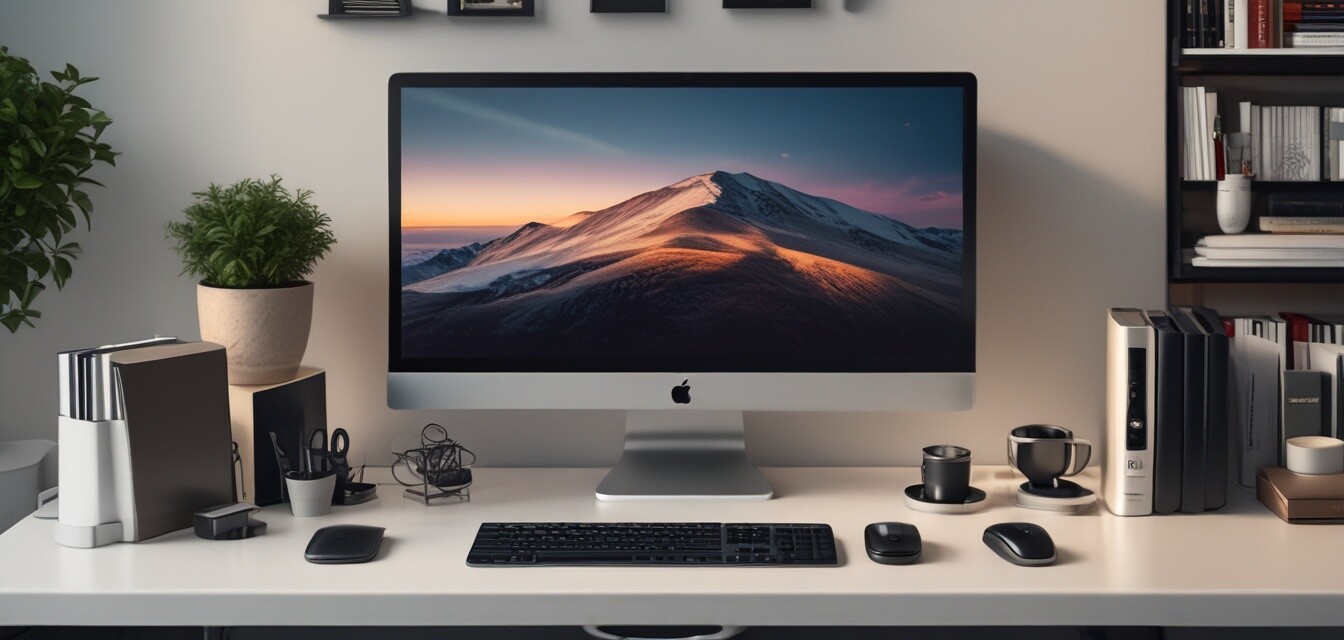
Home Office Technology: Trends to Watch in 2025
Key Takeaways
- The rise of ergonomic solutions will enhance productivity and comfort.
- Multi-monitor setups are becoming standard for efficiency.
- Smart home office gadgets are integrating more with everyday tasks.
- Advanced networking solutions are crucial for seamless connectivity.
- Trends in sustainability and energy efficiency are influencing product designs.
As we move closer to 2025, home offices continue to evolve alongside advancements in technology. Modern working environments now demand both comfort and efficiency, leading to innovative solutions in office equipment and accessories. In this article, we'll explore the exciting technology trends that promise to transform home offices in the coming years.
1. The Rise of Ergonomic Solutions
Ergonomics is at the forefront of enhancing productivity and comfort. Companies are increasingly recognizing the importance of investing in ergonomic accessories to combat the discomfort associated with long hours at a desk. Here are a few areas to watch:
| Ergonomic Accessory | Benefits |
|---|---|
| Adjustable Desks | Allows for sitting or standing, promoting movement. |
| Ergonomic Chairs | Support posture and reduce strain on the back. |
| Footrests | Enhance comfort and support proper leg position. |
2. Multi-Monitor Setups become Standard
Many professionals find that using multiple monitors allows them to work faster and be more productive. In 2025, having a dual or even triple monitor setup is likely to be the norm in home offices. Benefits include:
- Increased screen real estate for better multitasking.
- Enhanced focus, as tasks can be organized across different screens.
- Improved workflow with quick access to applications.
3. Integration of Smart Home Office Gadgets
Smart technology is making inroads into home offices, allowing for smoother workflows. Devices that seamlessly connect with personal assistants and home networks will become pivotal. Some examples include:
- Smart printers that connect via Wi-Fi and can be managed through voice commands.
- Automated lighting that adjusts according to the time of day to reduce eye strain.
- Smart speakers that provide reminders and alerts.
4. Advanced Networking Solutions
Reliable and fast internet connectivity is essential for remote work. As telecommuting grows, advanced networking solutions will be critical:
| Networking Solution | Advantages |
|---|---|
| Mesh Wi-Fi Systems | Provide seamless coverage in large areas, eliminating dead zones. |
| High-Speed Routers | Support multiple devices with stable connections. |
| Wi-Fi 6 Technology | Improved performance and efficiency, especially in crowded environments. |
5. Sustainability and Energy Efficiency Trends
With a growing focus on sustainability, home office technology is also reflecting eco-conscious practices:
- Energy-efficient devices that consume less power.
- Use of recyclable materials in manufacturing.
- Products endorsed for their lower carbon footprints.
Tips for Adopting These Trends in Your Home Office
- Identify your specific needs to customize your workspace.
- Research products that bear eco-friendly certifications.
- Stay updated with trends in technology through regular reading of our News and Trends section.
Conclusion
Staying informed about the latest trends in home office technology is vital for maximizing productivity and comfort. As we approach 2025, investing in ergonomic solutions, multi-monitor setups, smart gadgets, advanced networking, and sustainability is not just a luxury but a necessity for modern professionals. Make sure to explore more in our Computer Peripherals section to find tools that can transform your workspace.
Pros
- Enhanced productivity with ergonomic solutions.
- Improved comfort leads to higher job satisfaction.
- Smart gadgets simplify everyday tasks.
Cons
- Initial costs for setting up smart home offices can be high.
- Technology can be overwhelming for some users.
- Frequent updates may require ongoing investment.